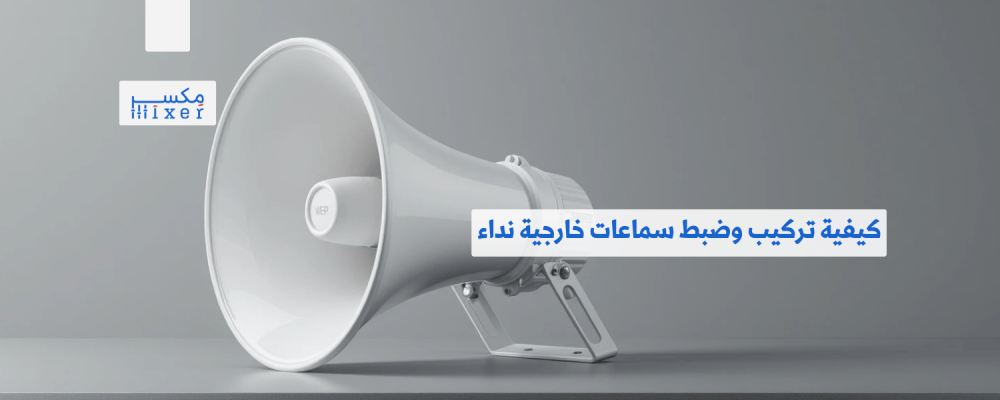How to install and adjust external call speakers to ensure optimal performance
Introduction to the article
In the world of audio systems, external speakers (horns or horns) play a pivotal role in transmitting sound to large spaces with clarity and power. Whether you install them in minarets, mosques, or public squares, choosing the right external horn , installing it, and adjusting it carefully ensures optimal audio performance and long-term stability.
In this article, we review the most important steps for installing and adjusting an earpiece , and present the best options available on the market.
First: Why do we choose external horn speakers?
- Horns are used because they:
- Produces a powerful, long-range sound
- Suitable for open and exposed areas
- Resistant to environmental factors such as heat, dust and humidity
- Provides high concentration of sound transmission without dispersion.
External horn components
- The external speakers consist of:
- A horn designed to direct sound waves over long distances.
- An internal audio converter (Driver Unit) is responsible for converting the electrical signal into sound.
- Weather-resistant outer cover protects the device from environmental elements.
- Fixing hardware (such as brackets and screws) for mounting to walls or poles.
Product types:
1. 60W Italian MOTIVITY MDU-60 External Horn
- Made in Italy for high quality and consistent performance,
- This horn features a 20-inch size with 60 watts of power to cover large areas such as yards or streets.
- Its dynamic design eliminates sound distortion and enhances clarity.
2. SKY SOUND 50W Korean Indonesian External Horn
- Offering an ideal balance between price and performance, it is ideal for minarets and lighthouses.
- Durable construction and excellent weather resistance.
3. 35W Korean Indonesian SKY SOUND external horn
- Best for small mosques or medium sized spaces.
- Easy to install and provides clear, direct sound at an economical cost.
How to install external horn speakers
- Determine the appropriate location
- A high, open location should be chosen, such as the top of a minaret or an exterior wall.
- Installation using brackets
- Make sure to point the speaker at a slightly downward angle to ensure the sound covers the floor.
- electrical conduction
- Connect the speaker to the amplifier using a cable of the appropriate type and length, and ensure good waterproofing.
- Testing and experimentation
- Turn on the system and test the sound from multiple angles. Adjust the volume and frequencies as needed.
The importance of adjusting the speaker accurately:
- Proper tuning avoids:
- audio distortion or interruption
- Disturbing neighbors or encroaching on the designated area
- Unwanted vibrations when turning up the volume
- It results in:
- Clear and balanced sound
- Less energy consumption
- Longer speaker life
Additional tips for choosing the right headset:
- Choose the power according to the size of the space (35 watts for small spaces, 60 watts for large spaces).
- Choose a weather-resistant material.
- Look for warranty and after-sales service.
- Make the installation site easily maintainable.
Related articles from the blog:
- Best Large Headphones of 2025
- Professional amplifier prices for an unparalleled audio experience
- How to set up and use a wireless paging microphone
Conclusion:
Installing and adjusting outdoor speakers isn't just a technical step; it's an investment in delivering clear and effective sound, especially in places of worship and open spaces. A good speaker system depends not only on power, but also on design, proper installation, and proper placement. Make sure to choose the right type for your location and follow the installation steps carefully to ensure optimal audio performance that will serve you for the longest possible time.
Are you looking for technical support? Or would you like a consultation before purchasing? Our team at MixerSA is ready to assist you with all your outdoor and indoor audio needs for mosques and institutions.

